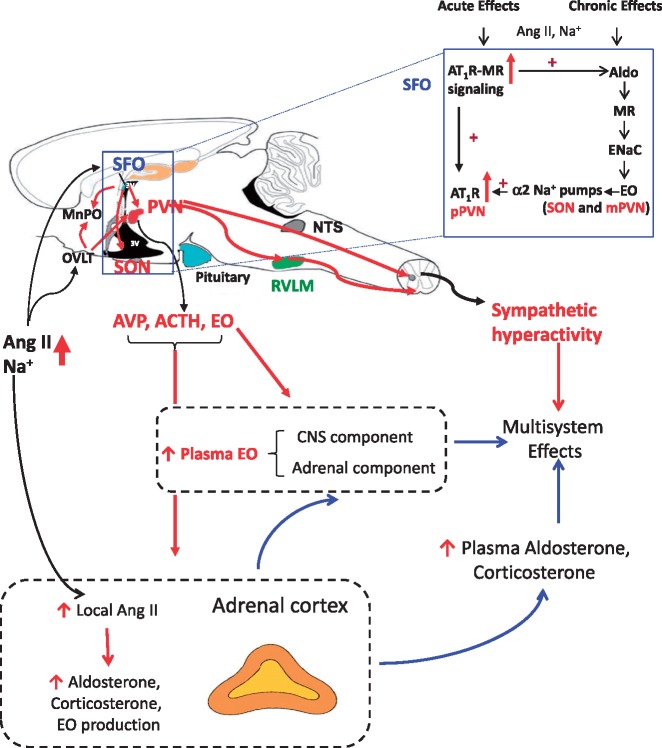Figure 6.
Proposed central and peripheral pathways/mechanisms being activated by circulating Ang II and high dietary salt intake. Central components: Both circulating Ang II and dietary salt, presumably by (transiently) increasing plasma [Na+], can activate Ang II-AT1R-ROS signaling in circumventricular organs such as the SFO and OVLT which are located outside of the BBB, followed by activation of angiotensinergic projections to the PVN, SON and RVLM (red lines). Prolonged stimulation of AT1R - MR in the SFO also activates a slow neuromodulatory pathway (box at upper right) that involves locally in the hypothalamus produced aldosterone that binds MR in, e.g. SON and PVN and via ENaC increases hypothalamic EO. Ouabain or EO acutely inhibit α2 Na+ pumps and chronically also activate an α2 Na+ pump associated protein kinase cascade that increases expression of ACE, AT1R and NADPH oxidase subunits. As a consequence, chronic Ang II-AT1R-ROS signaling is maintained/enhanced. Peripheral components: Chronic activation of brain angiotensinergic pathways can cause a persistent increase in sympathetic tone and in addition may stimulate the production and secretion of CNS EO as well as of AVP and ACTH into the circulation. These factors can all contribute to enhanced adrenal production and secretion of aldosterone, corticosterone and EO. A chronic increase in plasma EO will activate an α2 Na+ pump-associated protein kinase cascade (e.g. C-Src-mediated) that increases arterial smooth muscle cell NCX expression, and arterial sarcoplasmic reticulum (SR) Ca2+ pump (SERCA2) expression. The EO-induced NCX and SERCA2 up-regulation enhances Ca2+ signaling and thereby effects of SNA to increase vascular tone and elevate BP.

